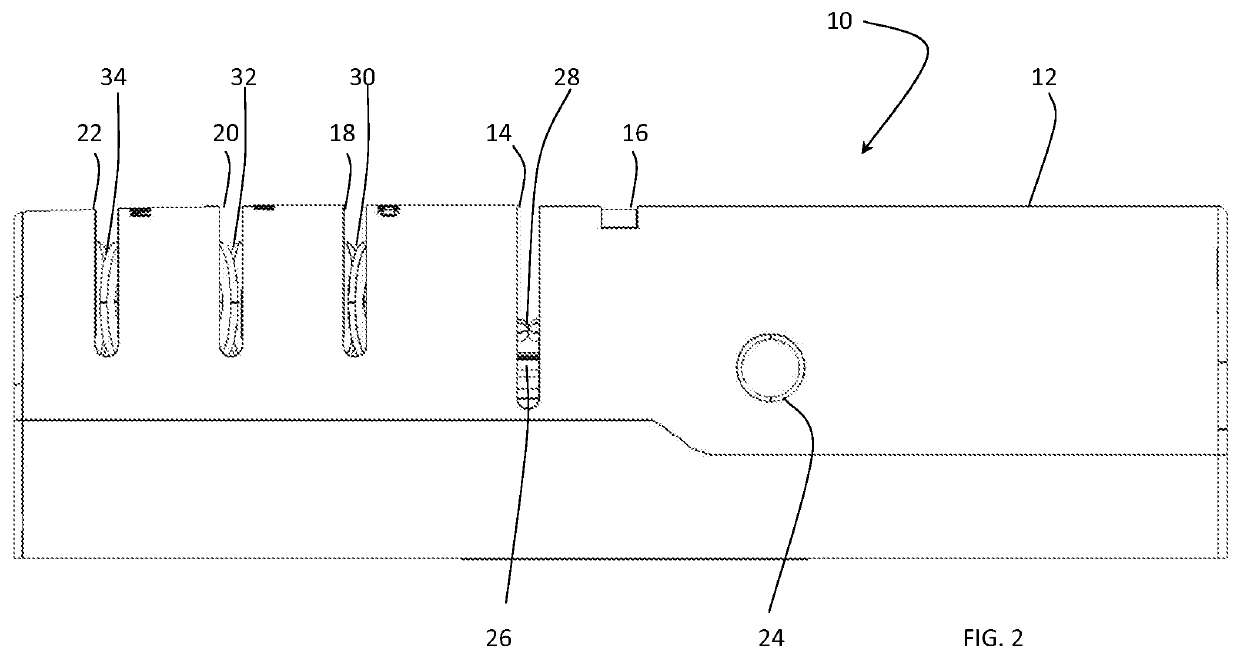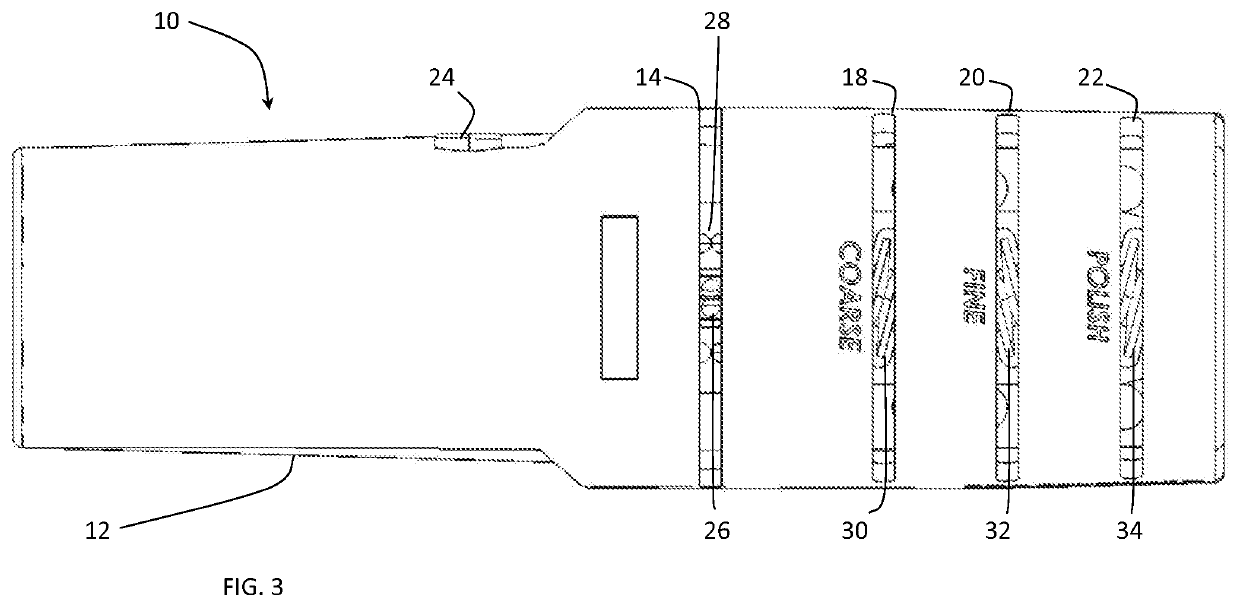Systems for Blade Sharpening and Contactless Blade Sharpness Detection
a technology of contactless blades and blades, which is applied in the field of knife and blade sharpness testing, can solve the problems of incongruity and haphazardness, difficult to ascertain the sharpness of a given blade, and equally difficult to determine the sharpness of blades in relation to other parts of the blade, so as to avoid unnecessary material removal. , the effect of effective and efficien
- Summary
- Abstract
- Description
- Claims
- Application Information
AI Technical Summary
Benefits of technology
Problems solved by technology
Method used
Image
Examples
Embodiment Construction
[0050]The systems for blade sharpening and contactless blade sharpness detection disclosed herein are subject to a wide variety of embodiments. However, to ensure that one skilled in the art will be able to understand and, in appropriate cases, practice the present invention, certain preferred embodiments of the broader invention revealed herein are described below and shown in the accompanying drawing figures.
[0051]The systems for blade sharpening and contactless blade sharpness detection disclosed herein may be employed to great advantage where blade sharpening and blade sharpness detection are enabled in a single device. However, it is to be understood that contactless blade sharpness detection systems according to the invention could be employed independently and that the present blade sharpening system could be exploited in combination with differently embodied blade sharpness detection systems or vice versa. The scope of the invention shall be limited only as may be expressly ...
PUM
| Property | Measurement | Unit |
|---|---|---|
| cutting edge angle | aaaaa | aaaaa |
| cutting edge angle | aaaaa | aaaaa |
| diameters | aaaaa | aaaaa |
Abstract
Description
Claims
Application Information
 Login to View More
Login to View More - R&D
- Intellectual Property
- Life Sciences
- Materials
- Tech Scout
- Unparalleled Data Quality
- Higher Quality Content
- 60% Fewer Hallucinations
Browse by: Latest US Patents, China's latest patents, Technical Efficacy Thesaurus, Application Domain, Technology Topic, Popular Technical Reports.
© 2025 PatSnap. All rights reserved.Legal|Privacy policy|Modern Slavery Act Transparency Statement|Sitemap|About US| Contact US: help@patsnap.com



